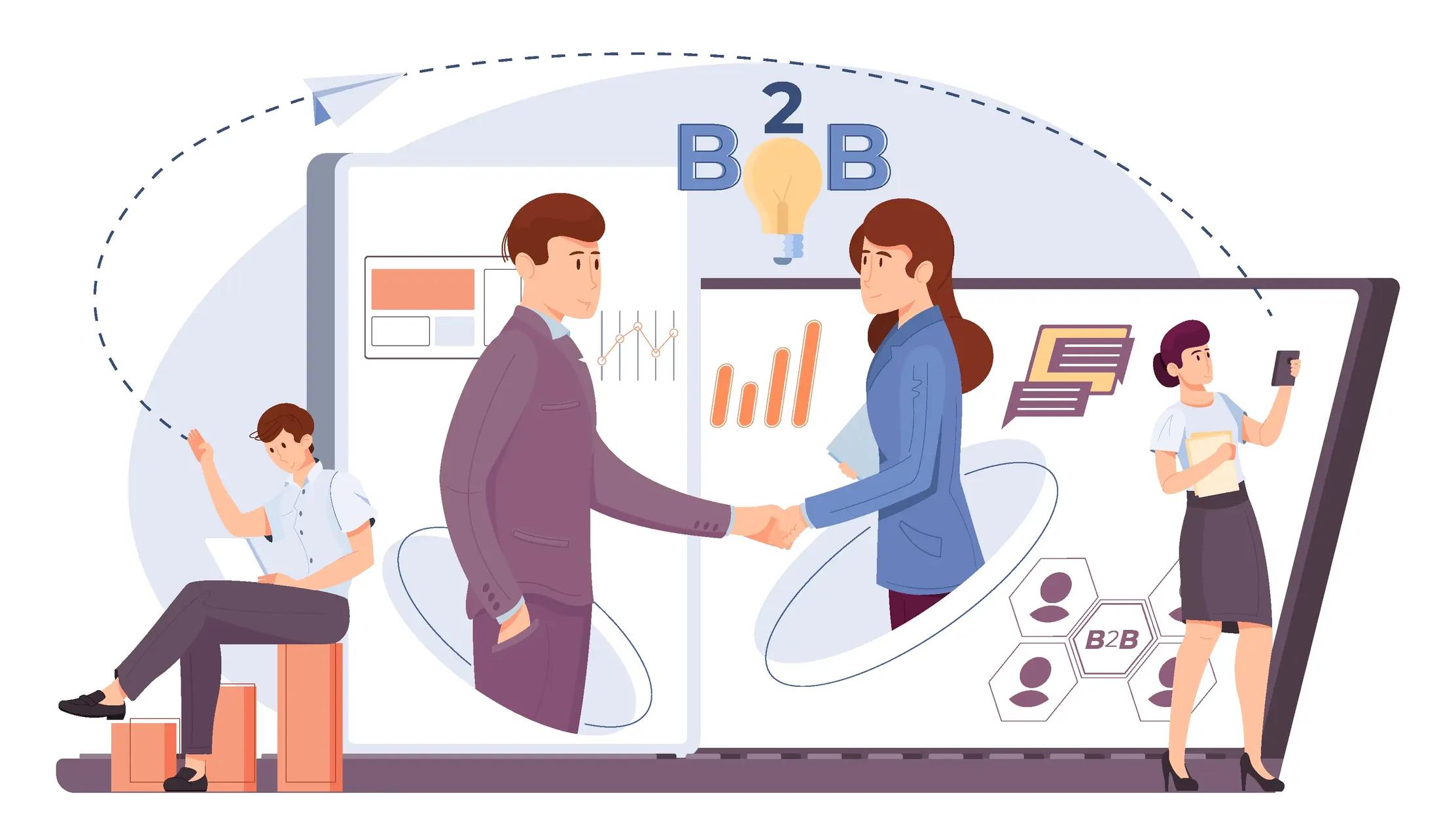
Inbound vs. Outbound Leads — Key Differences and How to Leverage Both
Confused about inbound vs. outbound lead generation? Wondering which is right for your B2B business? This article cuts through the jargon and shows you exactly how each approach works, their strengths and weaknesses, and most importantly, how to leverage both for explosive lead growth.
Contents:
- Inbound Marketing vs. Outbound Marketing: Who Leads the B2B Revolution?
- Who Are Inbound Leads? A Quick Snapshot
- Outbound Leads: Definition, Outbound Channels, and Prime Examples
- Inbound vs. Outbound Lead Generation: Comparative Analysis
- Inbound and Outbound Leads: Don’t Separate But Integrate
- Leveraging Technology for Lead Generation
- Leveraging Scheduling Tools to Maximize Lead Engagement
- Inbound vs. Outbound Sales Strategy: Conclusion
On the one hand, there’s B2B inbound marketing, an indirect approach to business promotion. It relies on content marketing, SEO, webinars, and social media communication. It’s about establishing the brand authority and saying, “We know this and that, and we’ll be there to help you when needed.”
On the other hand, there’s B2B outbound marketing, with leads acquired through tried-and-tested tactics like direct mail, cold calls, and eye-catching ads popping up in trade magazines. It’s a straightforward approach to advertising goods and services, much like walking up to a person and starting a conversation. It brings rapid results and allows you to reach out to a broad audience fast.
But what should you choose in your B2B business? Let’s answer this question. In this article, we’ll zero in on the choice between inbound vs. outbound leads and how both are essential for sustainable business growth.
Inbound Marketing vs. Outbound Marketing: Who Leads the B2B Revolution?
B2B inbound marketing is all about creating content that attracts people. The key characteristics? It’s subtle, delivers value, and makes the audience feel like they found you, not the other way around. That’s how inbound leads stroll into your world.
B2B outbound campaigns are akin to knocking on people’s doors. It’s what most of us consider old-school advertising: telemarketing, banners, ads, emails, etc. You take a proactive approach and don’t wait for customers to come to you. You introduce the company to them before they go to competitors.
Some marketers consider outbound strategies to be ineffective as modern users are increasingly dodging direct promotion. Millions hit the ‘Do Not Call’ list, and a big chunk of the younger crowd ignores intrusive ads. According to 97% of respondents, they don’t take phone calls from unknown numbers or businesses. The spray and pray method loses its selling power indeed. But we’re not here to jump to conclusions and ditch outbound lead generation.
So, what’s a marketer to do? It depends on who you are, who you’re talking to, and what size your business is.
Outbound lead generation is ideal as a starting point to grab attention. Inbound lead gen keeps people hooked with engaging content. So, many savvy companies, from tech startups to engineering giants, simultaneously focus on getting inbound and outbound leads.
It’s also crucial to consider the broader ecosystem of your digital presence. For example, if a client who’s seen an ad wants to read your blog, the website should load immediately.
If there are some issues with it, it’ll spoil the user experience and reduce your chances of selling products or services. If you need to lower loading times, consider speed optimization to ensure the target audience can experience smooth, efficient interaction.
In the following sections, we’ll peel back the layers of inbound vs. outbound lead generation. We’ll explore the difference between inbound vs. outbound leads and see examples of inbound and outbound lead generation strategies and how they can drive your business forward.
Who Are Inbound Leads? A Quick Snapshot
These are people who willingly come to you, attracted by your content. That’s it. Whether they’ve found you in search engines or watched a webinar, they show a high interest in your business, expertise, and products. They initiate the contact, so there is a high likelihood of converting them into customers.
Inbound channels where you can find potential customers include:
- Content marketing. Leverage blogs, eBooks, and whitepapers. Valuable content attracts qualified leads, establishing your brand as a thought leader.
- Search engine optimization and search engine marketing. Optimize the website for search engines, introduce relevant keywords, create alternative text for images, and write SEO-friendly meta information.
- Social media marketing. Engage your audience, build a unique brand voice, and share content on social media platforms like LinkedIn, Twitter, and Facebook.
- Webinars and online workshops. Give your brand a face and a voice, making it more relatable. Online events let you win over potential customers from around the world who wouldn’t have been able to attend an offline meetup.
Compelling Examples of Inbound Strategies from Pros
How can you attract inbound prospects? A solid B2B inbound strategy is more a marathon than a sprint. It’s like a magnet, luring consumers with content that resonates with them. Take HubSpot, for example. It provides valuable resources, like blog articles, free online courses, and tools to attract specialists interested in marketing solutions.
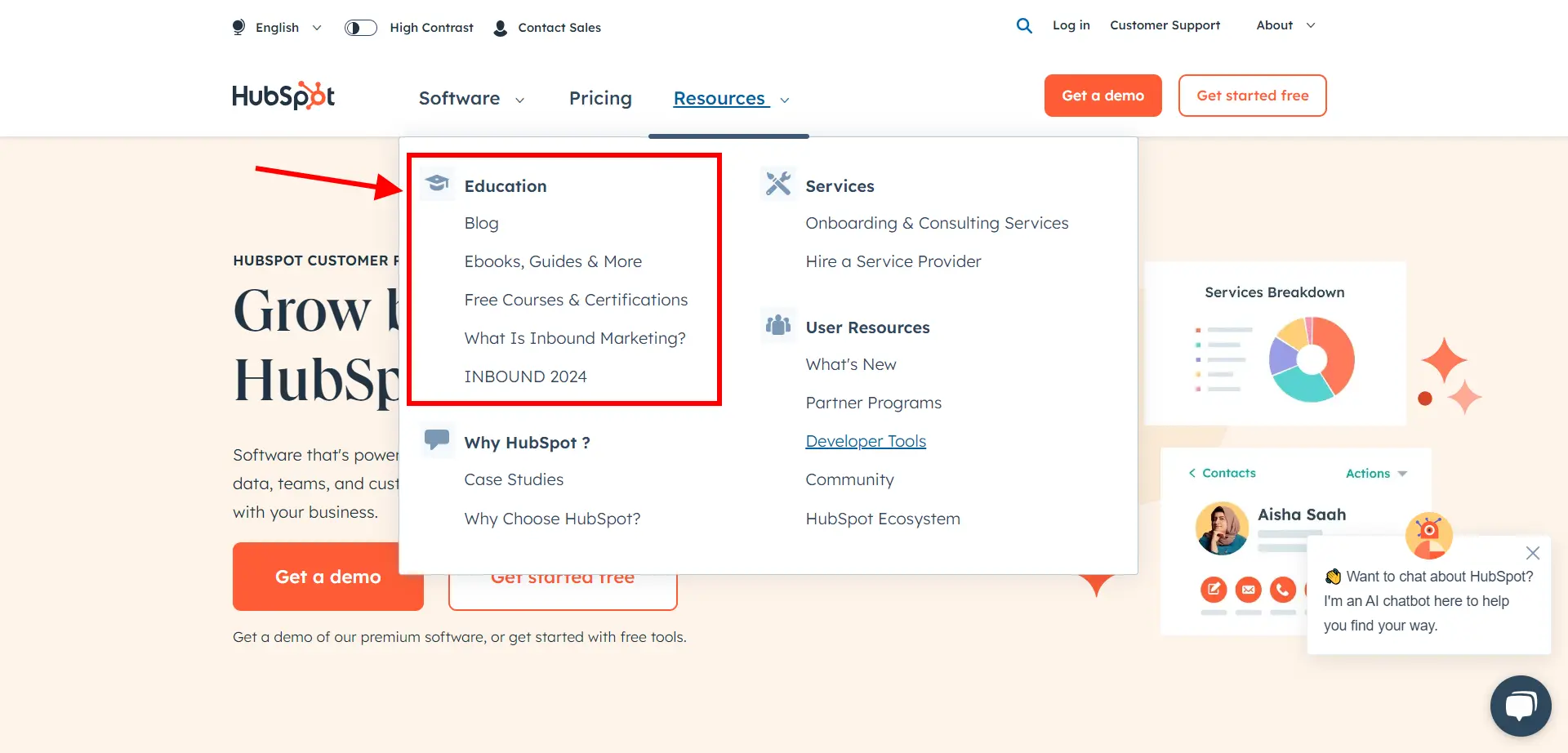
Among other successful B2B inbound lead gen examples are Salesforce and Slack. The former focuses on a community-driven approach and offers an extensive library of resources:
- webinars;
- eBooks;
- a forum that educates and fosters a sense of community.
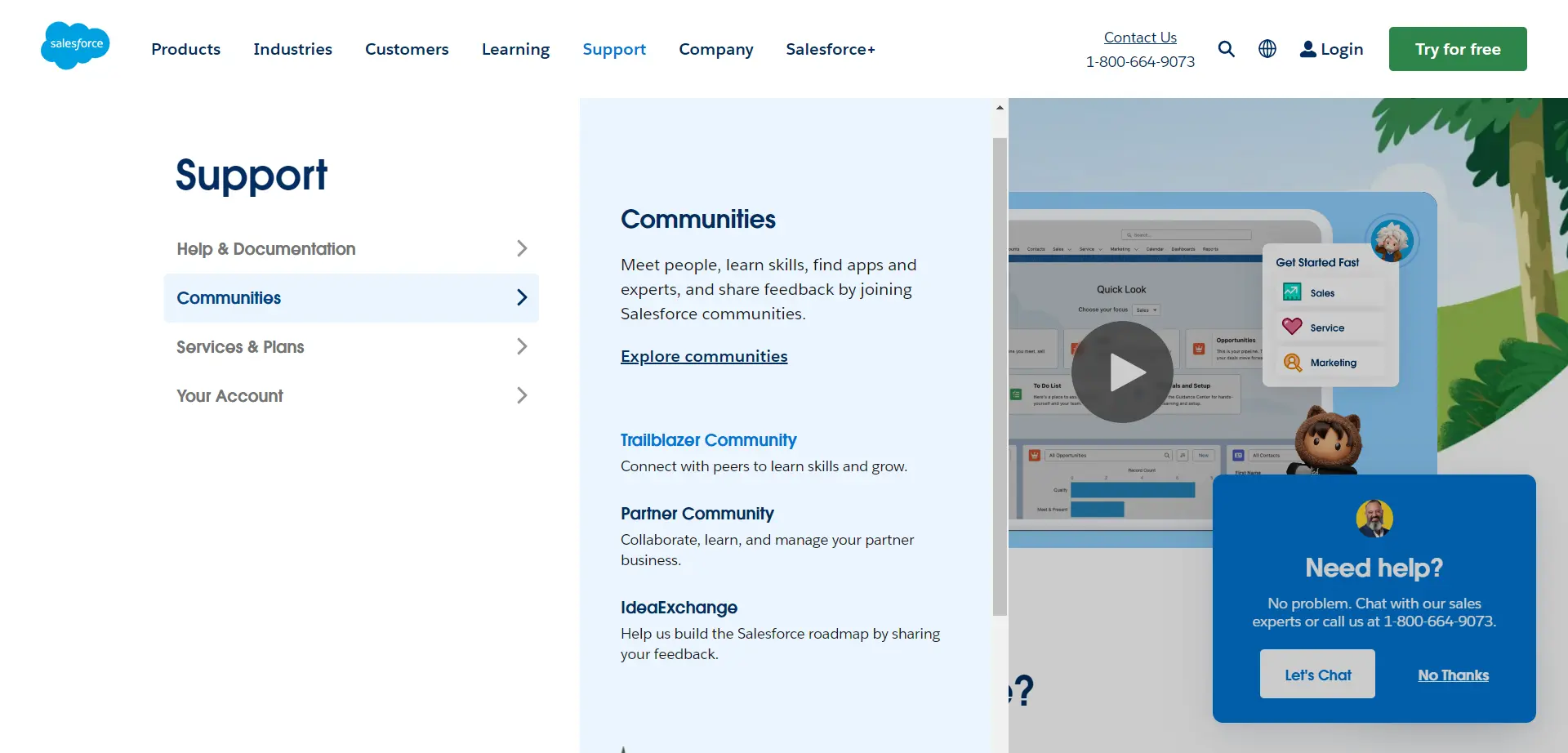
The latter leverages its unique brand voice and user-friendly content to carve out a niche in a crowded market. Its content is not just informative; it’s enjoyable to read. Check out one of its recent LinkedIn posts.
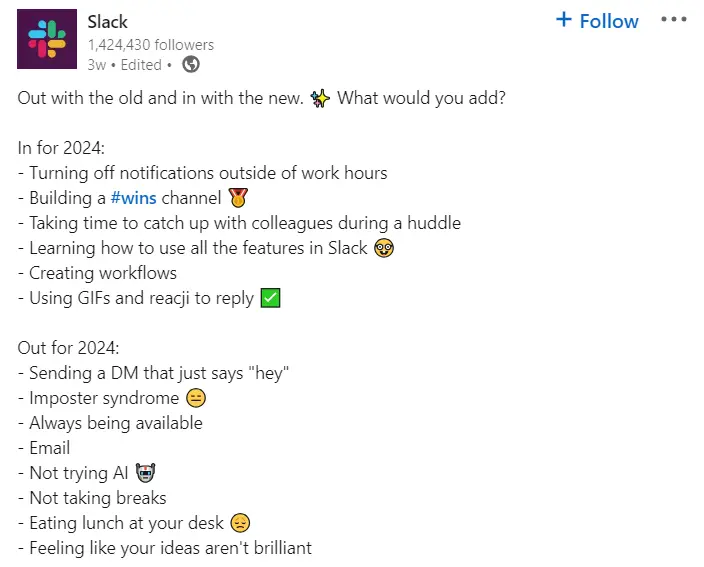
The big win here? Potential customers decide that they need your products on their own. This approach brings higher-quality leads and, ultimately, a better conversion rate. Plus, it’s cost-effective in the long run—good content generates new leads for months and even years, especially if you update it from time to time.
Inbound Lead Generation Challenges
There are some difficulties you may face when managing inbound marketing campaigns, such as:
- Inbound lead generation requires outstanding content creation to outperform what competitors have already published.
- To resonate with the audience, you need to understand their needs and pain points.
- You need to be patient until inbound campaigns generate sales.
To overcome these, you may want to employ technologies like artificial intelligence for data analysis, set realistic goals, and monitor your progress.
Outbound Leads: Definition, Outbound Channels, and Prime Examples
Now, let’s switch gears and talk about outbound leads. These are people who come to you as a result of the direct efforts of your sales team. That’s where your company becomes an actor, reaching out into the world and taking the first step.
While being undeservedly criticized nowadays, outbound marketing efforts can provide good results regarding lead generation. For example, they help you quickly connect with a broader audience, being much like a megaphone. They don’t require time to draw in potential customers.
Thanks to the ability of outbound marketing to bring rapid outcomes, you may use it to boost sales or announce a new product. Outbound tactics like cold calling or direct mail can create immediate awareness and prompt responses.
Take LinkedIn’s sponsored content, for instance. It’s an excellent example of an outbound lead generation strategy for B2B. The social network allows businesses to target specific industries, job titles, and even companies in their ads to find the ideal buyer.
B2B Outbound Lead Gen Tactics
Effective outbound marketing channels for generating leads include:
- cold calling and emailing;
- direct mail;
- display and paid ads;
- trade shows and events, etc.
They let you sustain sales conversations with the target audience through direct outreach. For example, cold calling is all about preparing a sales pitch, picking up the phone, and seeking out potential clients.
Let’s look at some illustrations, beginning with social media ads. Below, you can see three screenshots from Instagram suggested to me based on my browsing interests and behavior, showcasing different sponsored posts.
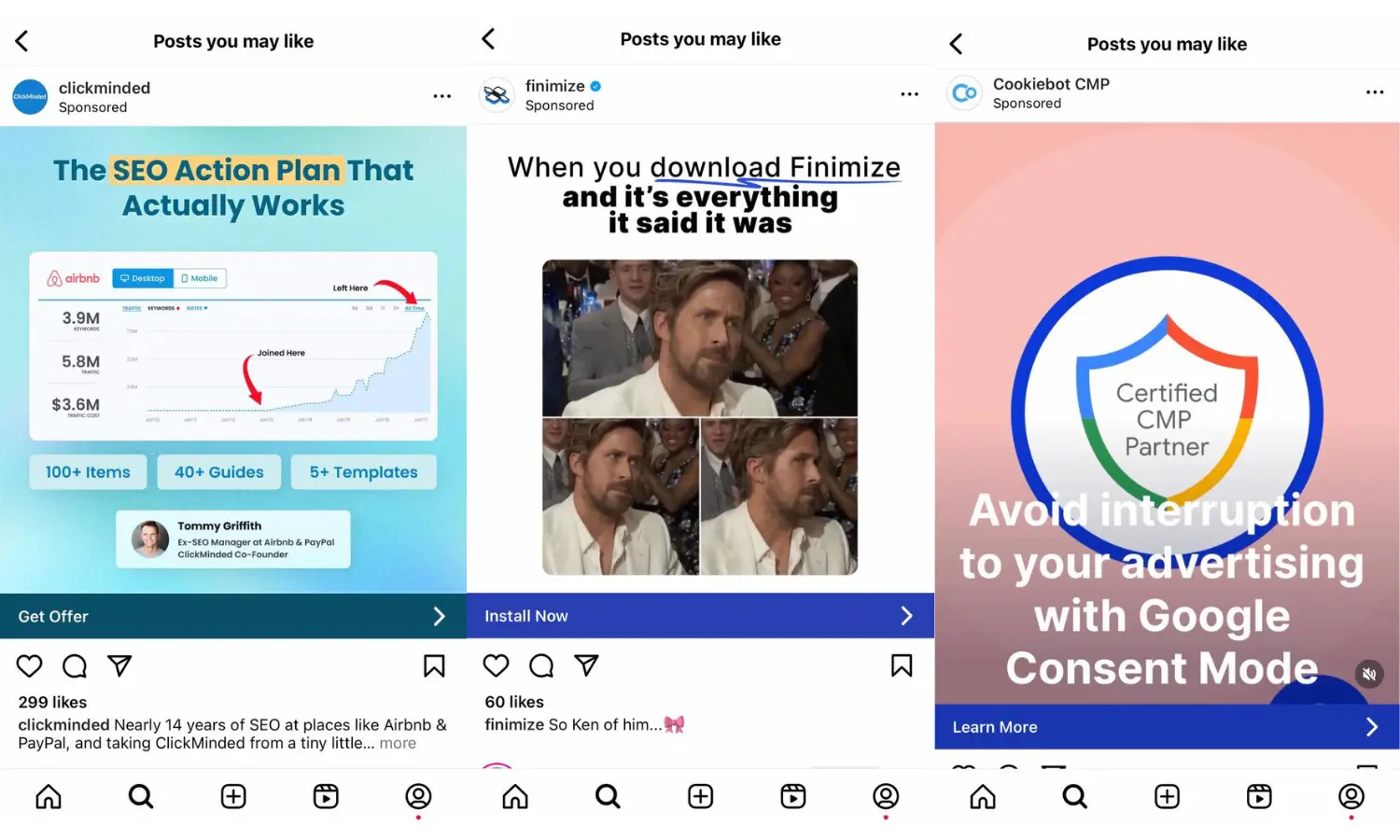
The first image is from Clickminded, which is promoting an SEO action plan. The second image is an ad from Finimize, featuring a meme with Ryan Gosling to underscore customer satisfaction with the service.
The third image shows an advertisement from Cookiebot CMP. It emphasizes the company’s certified partner status and offers a solution to avoid interruptions in advertising due to Google Consent Mode. Each post has a call to action, such as “Get Offer”, “Install Now, and “Learn More”, aimed at engaging the viewer further.
Another example is an email from CJ, an online advertising company. It cleverly used personalization to engage the recipient and provided the following information:
- Company name and account number (an indication that the email is specific to this company and is not a generic communication);
- A monthly health score of 27%, which is individual to the performance of the recipient’s account.
- Performance statistics, such as “Commission Earned Last Month”, “Year-Over-Year (YoY) Change in Last Month Sales”, “New Pending Offers”, “New Advertiser Relationships”, and “Days Active in CJ Insights Last Month”.
- KPIs to consider like “Sales Driven Last Month”, “Click-active (sales) Incentive Advertisers”, “Last Month Conversion Rate”, and “YoY Change in Last Month Conversion Rate”.
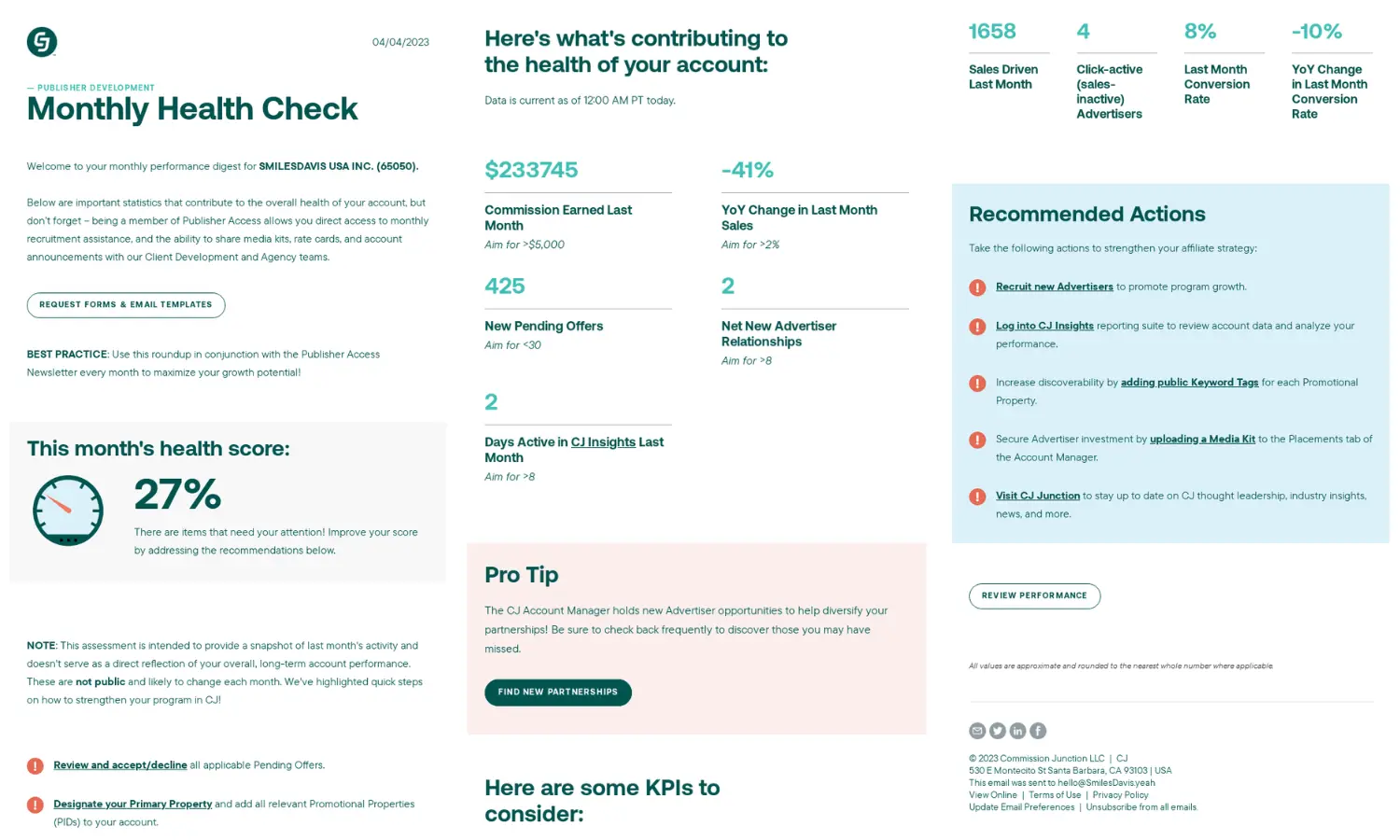
Outbound Lead Generation Hurdles
An outbound strategy has its flaws, too. Among them is the struggle to cut through the noise. We’re bombarded with information, not even paying attention to all the banners. It makes it more complicated than ever for companies to grab and hold interest.
That’s where personalization is critical. You need to tailor the message and content to fit the needs and interests of your target market, and these people should see the value in your offers. This might mean segmenting the email list or customizing cold calls based on the recipient’s industry or specific challenges.
For example, a client from the education sector may need to boost the number of sign-ups for their courses or programs. An online retailer may want to simplify the purchase journey. As such, they’ll respond to different ads.
Inbound vs. Outbound Lead Generation: Comparative Analysis
Inbound leads are your warm leads, coming in through organic traffic thanks to inbound marketing strategies. They’ve interacted with your content, maybe downloaded a lead magnet, and are halfway through the sales funnel before the sales team even says, “Hello”.
On the other side, there’s outbound – your sales rep reaches out, obtaining leads through outbound marketing techniques. It’s more direct, sometimes cold, but with the right approach, it can fill your lead flow with potential customers who haven’t yet found you.
| Inbound Leads | Outbound Leads |
| Generated through organic traffic, SEO, content | Generated through direct outreach like cold calls, emails |
| Leads are often more informed and engaged | Leads might be less aware of your brand |
| Long-term strategy, building brand authority | Short-term, quick to generate leads |
| Relies on content, social media platforms | Leverages direct mail, outbound lead gen tactics |
The winner in the outbound vs. inbound marketing battle depends on the situation. Consider a tech company selling SEO software. Not everyone may need it, and most clients will come to such a business deliberately through search. At the same time, they need to take a certain position (to be an SEO specialist, for example) and possess particular knowledge.
In this situation, the SEO software vendor will benefit from inbound marketing strategies. Other sectors, like consumer goods, might gain more profit from outbound lead generation techniques. In a nutshell, there’s no one-size-fits-all answer. The best solution might even be a blend of both.
Inbound and Outbound Leads: Don’t Separate But Integrate
Like everything, a winning B2B sales process requires striking a balance. While both inbound and outbound lead campaigns separately work well, you don’t fulfill their potential to the maximum extent possible when picking only one approach.
An inbound sales strategy can generate leads at a lower cost than outbound marketing tactics, but outbound techniques can increase your content’s reach. So, if inbound lead generation is steady, combining the two can give a boost to your marketing ROI.
By uniting them, you can create the following marketing mix:
- Podcast + LinkedIn outreach;
- Webinars + cold outreach + LinkedIn outreach campaigns;
- Lead magnets + social posts + cold outreach;
- Email + SEO.
Here are some pointers to get more leads from integrating B2B inbound and outbound marketing tactics:
- Be consistent in your messaging to reflect the brand’s value proposition across all materials;
- Create inbound content based on the data gained from outbound campaigns;
- Employ email marketing to promote new inbound content and include a call to action in the email copy to encourage people to open the website;
- Share inbound content on social platforms and use direct messaging features to follow up on leads;
- Launch retargeting campaigns to show ads to customers who browsed the website and interacted with inbound content but didn’t convert;
- Use insights from organic search (inbound) to inform your paid search keywords (outbound);
- Utilize customer feedback from outbound calls to tailor inbound content.
Leveraging Technology for Lead Generation
At this stage, it’s wise to mention some tools for inbound and outbound lead generation and lead management efforts. First off, one of the great solutions for inbound lead generation is HubSpot. It unites numerous capabilities under one roof for managing content, social media, SEO, and email marketing. These tools aim to nurture and guide inbound leads.
Then, there’s Mailchimp for outbound lead generation. It’s email marketing software for creating captivating email campaigns that stand out in inboxes, sparking interest and driving action.
Also, you need to analyze enormous amounts of data. Which blog post is bringing in more leads? Which email subject line got the most clicks? That’s where you need data analytics solutions. Luckily, most tools provide robust analytics features, including the above-mentioned Mailchimp and HubSpot.
To convert visitors into leads, you may also consider CallPage. It’s equipped with a click-to-call and meeting scheduling widget for potential clients to connect with you right there and then. CallPage’s features can streamline the decision-making process for inbound lead generation, allowing you to keep conversations with people who are really interested.
Inbound vs. Outbound Sales Strategy: Conclusion
What is the difference between inbound and outbound lead generation? The former is fast and active; the latter takes time and aims to form lasting client relationships. When standing at the crossroads, consider the following criteria:
- whether you’re ready for higher up-front costs;
- whether you can afford to wait for the campaign to bring results not immediately;
- your business size.
It’s all about time, money, and the desired outcomes. Inbound lead generation better serves established brands, while outbound lead generation lets startups make their name heard by a bigger pool of prospects. However, opting for only one type of promotion may cost you even more. Combine both inbound and outbound lead generation strategies to create resonating content and reach clients where they are.
At CallPage, we help B2B businesses like you connect with customers more effectively. As the leading provider of automatic callback solutions, we provide tools to boost the number of inbound calls from website visitors. Ready to see your sales calls and leads soar? Let’s chat.
---
About the Author
Kate Parish

Kate Parish, chief marketing officer at Onilab, Magento development agency. Kate helps businesses grow by developing practical and measurable digital marketing strategies. She shares her expertise in SEO, branding, link-building, and digital marketing tools for attracting, nurturing, and converting the target audience into loyal customers.
Check out other posts
Start generating leads today!
Start a 14-day free trial now,
set up the widget on your site, and see how many more leads you can capture with CallPage
- No credit card required
- 10 minutes set up
- 14 days fully-features free trial